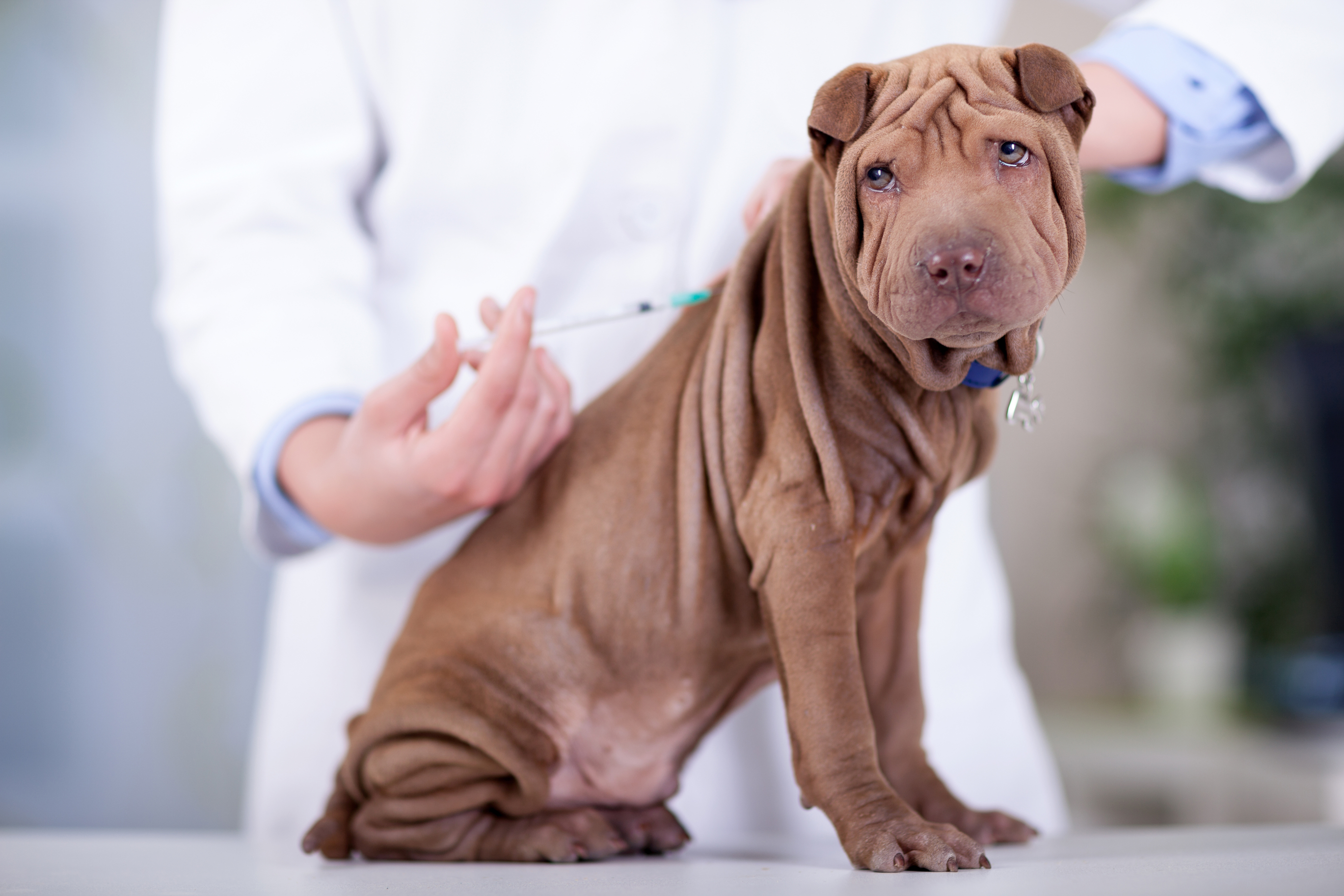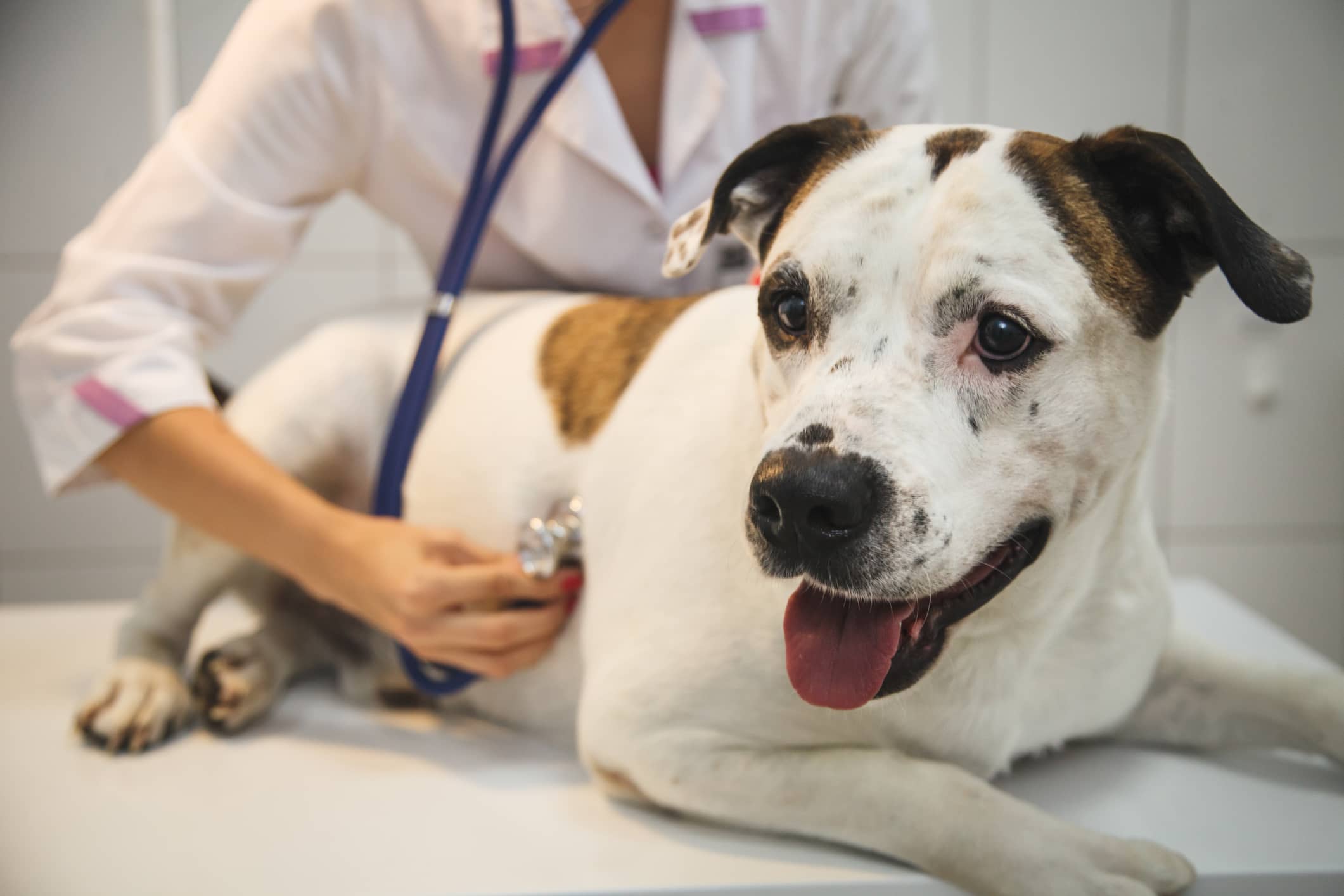Diseases treated
All mammals are affected by cancer and, as in humans, early diagnosis is a preponderant element in healing. APAVAC immunotherapy has already been used for many species (dog, cat, horse, new pets,...)

Lymphoma in dogs

Lymphomas (there are different kinds) are a common disease in dogs.
They most often involve animals of middle or advanced age. Lymphomas affect some breeds more than others (Beagle, Boxer, Bulldog English, Chow-Chow, Golden Retriever,...). Unfortunately, there is no way in the current state of veterinary science to prevent lymphoma in dogs.
The main symptoms of canine lymphoma
Lymphoma may be detected during a veterinary consultation when the dog owner finds his animal weakened or afflicted. Sometimes, it is by caressing the dog that we can discover a size that corresponds to a hypertrophied lymph node.
Diagnosis of canine lymphoma
After a clinical examination, the veterinarian will establish the precise diagnosis based, most often on the collection of a tissue sample (biopsy). It will also need to establish a general health of the dog, in particular to assess the risk of spreading the disease throughout the body (metastasis). For this, he will perform a blood test,an abdominal ultrasound and possibly a chest x ray.
This stage of diagnosis is very important and allows the veterinarian to choose, with the owner, which therapeutic strategy to choose to treat the animal by prioritizing the maintenance of a good quality of life of the dog and … of his entourage.
Treatment of canine lymphoma
Without any treatment, the life span of the dog is estimated between 6 to 8 weeks from the date of diagnosis but fortunately there are several therapeutic alternatives that must improve its duration and quality of life.
Lymphomas and chemotherapy
It is most often a combination of so-called “cytostatic” drugs that act particularly on all actively dividing cells.
In addition to cancer cells, the stomach and intestinal mucosa can be affected and cause symptoms such as loss of appetite, vomiting or diarrhoea.
But many dogs respond very well to chemotherapy and are in good shape for the duration of the treatment.
Administration is by repeated courses between 1 and 3 weeks apart, 3 to 6 times, depending on the type and criticality of lymphoma diagnosed by the veterinarian.
Throughout the duration of treatment, the dog remains at home between the stages of administration to the veterinary clinic (by tablets, subcutaneous injection or intravenous injection depending on the medication). However, it is recommended that those around you, especially during the first few days at home, pay attention to the risks associated with close contact and body fluids of the dog.
In terms of results, veterinarians specialised in oncology conclude that 85% of dogs no longer show any symptoms from the first days after the start of effective and adapted chemotherapy. In this case, the lifespan is about 10 to 12 months. After two years, about one in five dogs is still alive and has no symptoms.
Lymphomas and cortisone
Cortisone (prednisone) can be used for some low malignancy lymphomas.
But it should never be administered directly by the owner until the veterinarian has made the decision in consultation with him, whether or not to start chemotherapy treatment. Indeed, it may happen that a dog does not respond effectively to chemotherapy or other treatment if he has taken cortisone beforehand.
If the owner decides, for various reasons, not to treat his animal with chemotherapy, cortisone reduces the symptoms of the disease with a lifespan that reaches on average three to four months and even up to two years without some cases.
Lymphomas and APAVAC® immunotherapy
The purpose of chemotherapy is to eliminate symptoms and to have a dog that feels good, during and after treatment for as long as possible, avoiding severe side effects and ensuring a comfortable and pleasant quality of life. You should also know that most dogs undergo a relapse and only rarely do dogs fully recover.
In this context, the APAVAC® alternative is a safe “companion” treatment, without toxicity and without side effects, and which is especially personalised to the dog, its type of lymphoma and the state of progress of the disease.


